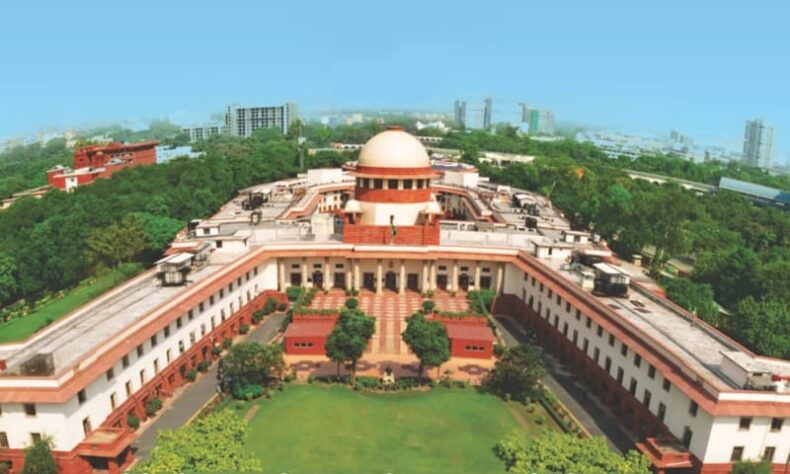Government PU College in Udupi in Karnataka against the Supreme court.
Supreme Court, Delhi: The Bench in the supreme court of Justice Hemant Gupta and Justice Sudhanshu Dhulia and Senior Advocate Huzefa Ahmadi and Advocate Nizam Pasha defending the case. The Case got a new turn when Solicitor General Tushar Mehta said, “No students were insisting on wearing Hijab till 2022.”
Supreme Court on Hijab Ban: Hijab Case
 (Source: IJLPP)
(Source: IJLPP)
College students have become a symbol of resistance which gave rise to religious tension over the right to wear the Hijab which is considered religious clothing by many. In March 2022 addressing the hijab row with “Emancipation of women”, the court quoted Dr Bhim Rao Ambedkar in support of their verdict in Hijab case.
Supreme Court bench comprising Justices Hemant Gupta and Sudhanshu Dhulia said to hear a batch of petitions which will be challenging the ban on wearing a Hijab in educational institutions in Karnataka.
The wearing of a hijab is mandated by the Quran “Perfect To All Times To Come”, appealed in Supreme Court and questioned the High court judgement on Hijab Case in Karnataka to link the passage of time since the practice originated.
Advocate Nizam Pasha, who appeared as appellant Muslim parties, submitted that verses of the Quran “have become outmoded in bordering of irreverence.” He further added, “Sikhs wearing turban then why not Muslims with hijab.”
Justice Hemant Gupta and Sudhanshu Dhulia, meanwhile, told Advocate Pasha to not compare Hijab wearing and Turbans of the Sacred Sikh community, as they further added,

“The 5 Ks (Kesh/Hair, Kanga/Comb, Kara/Bracelet, Kadhera/White undergarment, Kirpa/Curved knives.)” are all well established.
And in the 1952 Act, “The one who does not follow 5 Ks is not a Sikh. And to not just compare both as Sikhs Religion is not only 100 but 500 hundred years old”, Sudhanshu Dhulia added.
The council asked in hijab case, several Sikh boys in the very same class wear turbans and Patka of the same colour as their uniform and they are allowed why not Muslim girls? And the fact that it does not have any effect on discipline has been established in India. And many Sikh boys do not have long hair and still believe in Sikhism just like some Muslim girls, so those boys should be too disallowed to wear it.
The Bench, Justice Sudhanshu responded: “turban or Kara are different norms of Sikhism, well established in the culture of this country for many years…….. Please don’t draw a parallel line between them; that is what we are saying.”
Advocate Pasha argued, “My submission is the same…… 500 years of practice and establishment?…… Mine is 1400 years of practice.”
The court added that it will examine his argument, on the Independent of the Sikh.
Pasha also added, “it can be reasonably assumed that wearing hijab had a thicker connection to Socio-cultural conditions than common in the region.”
Arrive at this conclusion, he said the High court relied on commentary from the Scriptures which says “Alas! We must ask ourselves this question: Is this the condition present among us.”
The Hijab Case: Turning Point?

Karnataka in Supreme Court on September 20, 2022, said students were provoked into wearing hijab to school by Popular Front Media (PFI), via social media messages.
Appearing before a bench, Solicitor General Tushar Mehta in Hijab case said, “No students were insisting on wearing Hijab till 2022.” He also added, “The allegation on hijab case is a part of a bigger conspiracy orchestrated by PFI to make Social chaos.”
Now other students also started to insist on wearing saffron-coloured shawls to the classroom. But both hijab, as well as shawls, are banned.
The HC with state circular notified educational institutions to stick to their regular uniform and to be “Religion Neutral for all.”
Tushar Mehta further added, “A movement has begun by PFI and their social media messages, in which they continuously sent messages asking students to wear hijab. Which led to spontaneous acts by some students and slowly sowing the seeds of a conspiracy using students.”
In Hijab Case, The Bench pointed out that one of the petitions filed by a student was that she was wearing a hijab and was stopped by her school. Mr Mehta said nobody before 2022 raised the necessity of wearing hijab and saffron shawls but suddenly after the ban a concern about wearing hijab has taken place among the students.
He further added, “If the government had not acted then it would have been ignoring the duties and that the circular was secular and neutral. And it is not just like if a single community was stopped from wearing hijab. All students had to adhere to their respective uniforms provided by the school or any educational institution.
Justice Dhulia on the bench said, that religious leaders and courts are not ideally meant to establish a religious practice. The High Court could have avoided excavating into the hijab question during Hijab Case.
Judicial Review ought to be confined to whether a religious practice is violating order or rules, health or morality in any way.
In Hijab Case further, Senior advocate Dushyant Dave took the Petitioner’s side and submitted an argument that the high court had failed in testing the legality of wearing hijab in public places. He also added, “It is the right of a Muslim woman to choose whether or not they want to wear a hijab or how to cover her head.”
(With inputs from Multiple Media Outlets)
Read more at: Karnataka High Court:Hijab Case












